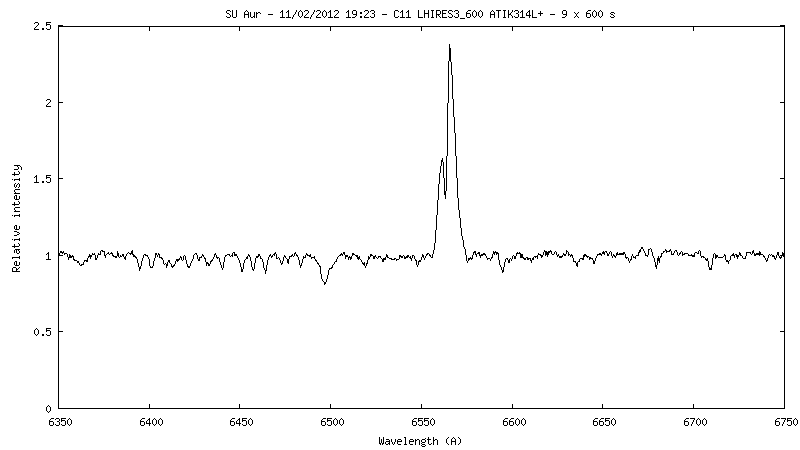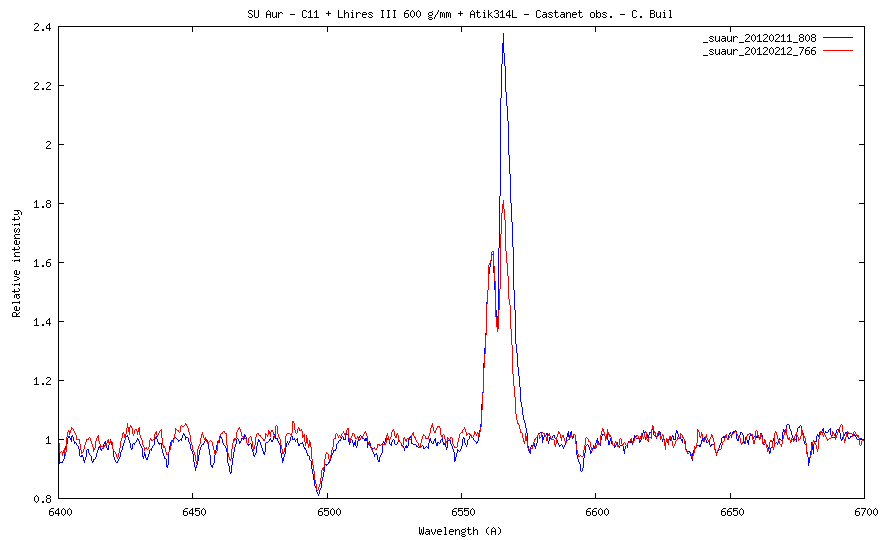Call for observation: SU Aur
Posted: Sat Feb 11, 2012 4:14 pm
Hi all,
Hans Moritz Guenther (Harvard-Smithsonian Center for Astrophysics)
ask me for an urgent observation project.
Hans says:
In a few days, I have an observation of SU
Aur with XMM-Newton. It would be very useful to obtain simultaneous
spectroscopy of the Halpha line (more details on the science are below).
SU Aur is relatively bright (m_V = 9.5). It's an accreting, young
classical T Tauri star and we want to study the relation between X-ray
flares and accretion.
Thus, I am looking for someone who can take Halpha spectroscopy (which
traces the accretion) in short cadence during the XMM-Newton observation
(in UT 2012-02-15@20:31:13 to 2012-02-17@01:27:53).
The Halpha line of SU Aur is very broad (~500 km/s) and bright (about 2
times the continuum level).
See http://sprg.ssl.berkeley.edu/~cmj/html/suaur.html
for examples of SU Aur's H alpha line in past observations.
Thus, a resolving power ~50-100 km/s = 3000-6000 is totally sufficient,
but of course I don't say "no" to better spectrum.
However, short exposure times are also important, so that I can see if
the Halpha line profile changes, when an X-ray flare happens.
I can compile observation observations for Hans
Note : A Lhires III 300 to 1200 lines/mm seem a good instrumental
configuration for this target. But LISA or eShel (large telescope) can be
also usuable.
Christian Buil
Hans Moritz Guenther (Harvard-Smithsonian Center for Astrophysics)
ask me for an urgent observation project.
Hans says:
In a few days, I have an observation of SU
Aur with XMM-Newton. It would be very useful to obtain simultaneous
spectroscopy of the Halpha line (more details on the science are below).
SU Aur is relatively bright (m_V = 9.5). It's an accreting, young
classical T Tauri star and we want to study the relation between X-ray
flares and accretion.
Thus, I am looking for someone who can take Halpha spectroscopy (which
traces the accretion) in short cadence during the XMM-Newton observation
(in UT 2012-02-15@20:31:13 to 2012-02-17@01:27:53).
The Halpha line of SU Aur is very broad (~500 km/s) and bright (about 2
times the continuum level).
See http://sprg.ssl.berkeley.edu/~cmj/html/suaur.html
for examples of SU Aur's H alpha line in past observations.
Thus, a resolving power ~50-100 km/s = 3000-6000 is totally sufficient,
but of course I don't say "no" to better spectrum.
However, short exposure times are also important, so that I can see if
the Halpha line profile changes, when an X-ray flare happens.
I can compile observation observations for Hans
Note : A Lhires III 300 to 1200 lines/mm seem a good instrumental
configuration for this target. But LISA or eShel (large telescope) can be
also usuable.
Christian Buil

